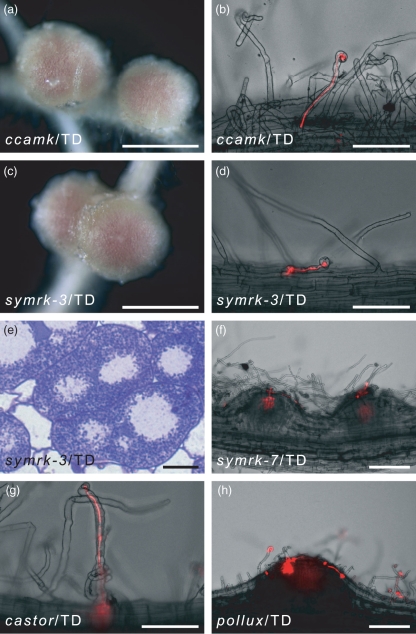Figure 1.
Complementation of rhizobial infection phenotypes of non-nodulating mutants by CCaMKT265D transformation. (a–h) Transformed plants were inoculated with DsRed-labeled Mesorhizobium loti. (a, c) Mature nodules formed on the roots of ccamk-3/CCaMKT265D (ccamk/TD) and symrk-3/CCaMKT265D (symrk-3/TD) after 4 weeks of inoculation. Scale bars are 1 mm. (b, d, g) Root hairs of ccamk/TD, symrk-3/TD and castor-4/CCaMKT265D (castor/TD) 2 weeks after inoculation, shown as merged images of bright-field and fluorescence images (DsRed). Infection threads can be seen inside the curled root hairs. Scale bars are 100 μm. (e) A mature nodule section of symrk-3/TD stained with toluidine blue. The nodule was filled with differentiated bacteroids. Scale bar is 20 μm. (f, h) Nodule primordia with rhizobial infection on the roots of symrk-7/CCaMKT265D (symrk-7/TD) and pollux-2/CCaMKT265D (pollux/TD), shown as merged images of bright-field and fluorescence images (DsRed). Scale bars are 200 μm.

